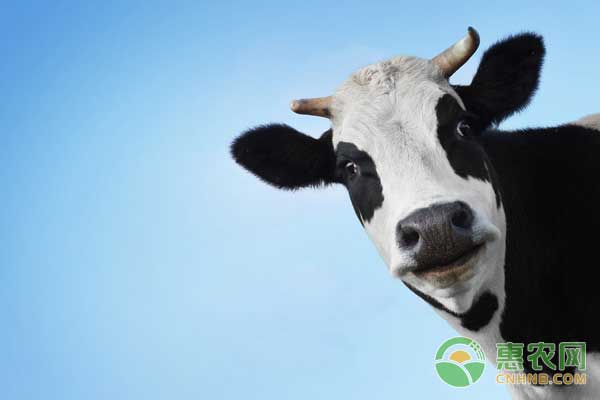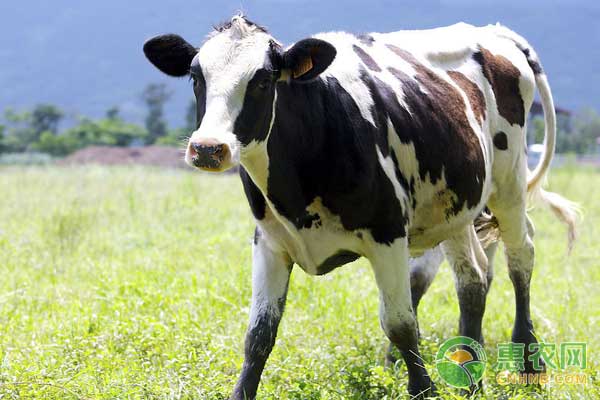Bovine tuberculosis is a zoonotic infection caused by Mycobacterium tuberculosis, mainly through respiratory and digestive tract infections, or through placental infection or mating infection. Bovine tuberculosis can occur all year round, because the livestock houses are crowded, dark, humid, dirty and unclean, excessive servitude and milking, poor feeding, etc., so that the cattle that are housed are more likely to be infected with bovine tuberculosis.
The healthy herd is quarantined twice a year for tuberculosis, and the quarantine is assumed four times a year for the assumed healthy herd. The first quarantine should be carried out 20-30 days after the birth of the yak, and the second and third quarantines should be carried out separately at 3 months and 6 months of age. All cattle that have detected positive tuberculosis should be removed from the herd immediately, and the cattle should be re-examined after 30-45 days. If the positive reaction cattle are no longer found three times, it can be considered as a healthy herd. Cattle that can be detected should be promptly isolated and reviewed after 25-30 days; if it is still a suspicious reaction, it should be re-examined after 25-30 days; if it is still a suspicious reaction, it should be treated as appropriate.
First, clinical symptoms and pathological changes
The incubation period for bovine tuberculosis is as short as 16-45 days and can be more than a few months. The course of bovine tuberculosis is chronic, and the systemic symptoms are not obvious at the beginning of the disease. Only the unconscious cause of weight loss and milk production are reduced. Intermittent heat and relaxation heat occur in the later common body temperature and will last for a few days or weeks. Acute miliary tuberculosis can be seen in hyperthermia, and the total number of neutrophils and white blood cells is significantly increased; in chronic cases, only the total number of white blood cells is slightly increased (> 10000 cells/ml), and the cell classification is most obvious with lymphocyte proliferation.
1. Clinical symptoms Clinical symptoms may vary depending on the location of the tuberculosis.

(1) Tuberculosis is prone to a strong dry cough but short sound when inhaling cold air to drink cold water. After the tax, the cough is frequent and long-lasting. There is a yellowish gray purulent secretion that coughs out, but it is often swallowed into the stomach or out of the nostrils.
(2) tuberculous pericarditis early auscultation can be detected by friction sound puncture fluid. In the later stage, the epicardial adhesion frictional sound disappeared, and only the weak heartbeat, the heart sound zone expanded or almost disappeared.
(3) Abdominal organ tuberculosis There are no special symptoms of peritoneal tuberculosis, and large nodules on the left rib rumen or peritoneum can be touched from the outside. The internal genital organs and their adjacent masses, mesenteric lymph nodes, and axillary lymph nodes can be touched by rectal examination.
(4) reproductive system tuberculosis is more common reproductive dysfunction such as uterine tuberculosis more common abortion, frequent estrus or continue to estrus, uterine secretion of purulent mucus and vaginal secretions mixed with white or yellowish flakes or mixed with blood.
(5) The progress of breast tuberculosis is slow and not easy to detect at the beginning. In the late stage, the swelling of the breast tissue and the hard nodules of the painless and hot spots are touched. The breast atrophy and the breast lymph nodes on the upper edge of the diseased breast are hard and swollen. The surface is sometimes uneven. If the breast has acute caseous necrotic breast and the corresponding lymph nodes are highly swollen and painful. Milk is as thin as water and contains a lot of white flakes and crumbs. The milk production gradually decreased and finally stopped completely.
(6) Surface lymph node tuberculosis can occur in the pharyngeal and mandibular lymph nodes, and the rest are mostly secondary. The sputum surface lymph node tuberculosis can occur suppuration and rupture outward after skin adhesion; pharyngeal lymph node enlargement can make difficulty in swallowing, ruminating and breathing; anterior shoulder lymph node and pre-femoral lymph node enlargement can make the corresponding limbs difficult to move.
(7) Kidney or renal pelvis tuberculosis shows that urine turbidity contains protein and has an ammonia odor. Tuberculosis can be detected by collecting tuberculosis from tuberculosis.
(8) Central nervous system tuberculosis has two kinds of cases: cranial nerve tuberculosis and spinal tuberculosis. The former shows tuberculous meningitis or the corresponding complement of neurological dysfunction in the brain; while the latter shows increased reflex excitability, restlessness, mania, Muscle convulsions eventually lose consciousness.
(9) The most common form of bone tuberculosis is rib tuberculosis, and the manifestation of bone tuberculosis is thicker within a certain range. Vertebral tuberculosis is characterized by increased sensory and post-surgical spinal cord compression. Joint tuberculosis is more than knee joints.
2. Pathological changes In addition to inflammation, exudate and hyperplasia and other common changes, the specific pathological changes of tuberculosis are as follows: First, tuberculous necrotic tissue is mostly yellow cheese-like degeneration. Second, exudates are generally easy to absorb, but they are not easily absorbed when necrosis occurs. Third, the tuberculous nodules formed by hyperplasia are white or yellow, the texture is hard, the edges are neat and clear, and necrosis may occur. A single nodule is small but often multiple nodules fuse together to form a needle tip or a nodule with large rice grains and large eggs. The combination of these three changes can also be transformed or dominated by one change.
Second, diagnosis
According to clinical symptoms and pathological changes, a preliminary diagnosis of the disease can be made, but the diagnosis must be combined with laboratory diagnosis or tuberculin test. The diseased cattle are the former and the suspected herd and the healthy herd are the latter, and then cooperate with the laboratory diagnosis.
1. Laboratory diagnosis can collect lymph nodes, abscess contents, thoracic or joint cyst puncture fluid, nasal fluid, urine, semen or uterus, vaginal secretions and milk, etc. for special staining, isolation and culture of Mycobacterium tuberculosis Or animal inoculation test. Combination of all three results are more reliable.
2. Tuberculin test mainly has two methods: intradermal injection and eye-eye method. Intradermal injection is to inject tuberculin into the skin of the yak shoulder or into the middle of the neck of the cow. After 72 hours, check for local heat pain, swelling and texture changes. Measure the swelling range and wrinkle thickness with a caliper. To determine if it is infected with tuberculosis. For cattle that are judged to be negative or suspicious, a second injection should be made at the same dose in the same site, and the judgment reaction should be carried out after 48 hours. Both are negative for a healthy cow.
The criteria for its determination are as follows:
Negative (-): Non-inflammatory or only cold, solid and well-defined non-inflammatory swelling.
Suspicious (±) no obvious inflammatory edema, skin thickening 5-8 mm swelling area less than 35 mm × 45 mm.
Positive (+): fever has painful edema, the boundary is not obvious, the quality is like dough, the area is larger than 35 mm × 45 mm; or the heat pain reaction is not obvious but the wrinkle skin thickening is more than 8 mm.
The eye-pointing rule is to use tuberculin to eye, and it usually takes 2 to 5 days. 2 eye points must be performed in the same eye, and the conjunctiva must be normal. The eye should start in the morning and be observed once every 3 hours, 6 hours, 9 hours, and 24 hours after the eye.
The criteria for its determination are as follows:
Negative (-): no reaction or conjunctival only slightly hyperemic, with serous clear secretions.
Suspicious (±): no obvious eyelid edema and systemic symptoms, only grayish translucent mucous secretions larger than 2 mm × 10 mm accumulate in the conjunctival sac or the corner of the eye.
Positive (+): no above reaction or lighter, but conjunctival hyperemia, edema, tearing and other systemic reactions.

Third, prevention
For cattle with obvious clinical symptoms, the viscera should be culled, destroyed or deeply buried in time. The meat must be treated with high temperature before being eaten. Cattle that is positive for tuberculin test should also be eliminated and treated under adequate conditions if conditions permit.
1. Environmental disinfection 5% carbolic acid solution, 4% sodium hydroxide solution and 1.2% formaldehyde solution have the best effect on Mycobacterium tuberculosis, while lime milk and mercury-raising effect are poor. In environmental disinfection, it should be selected as appropriate.
2. Western medicine treatment
(1) Isoniazid 2 mg / kg body weight and oral 2-3 times a day. Intramuscular or intravenous injection can be performed in acute attacks. Isoniazid in combination with other anti-tuberculosis drugs can reduce the occurrence of drug resistance.
(2) Streptomycin adult cattle 10-15 mg / kg body weight 2 times daily intramuscular injection.
(3) Kanamycin and streptomycin.
(4) Rifampicin adult cattle 6-10 mg/kg body weight divided into 2 doses. The synergistic effect of rifampicin and isoniazid can delay the development of drug resistance of Mycobacterium tuberculosis.
3. Chinese medicine treatment in the use of antibacterial western medicine, should be combined with traditional Chinese medicine syndrome differentiation can improve the efficacy, can refer to the internal veterinary internal injury cough, kidney gas, cough and asthma and pulmonary phlegm and cough and other dialectical treatment.
(1) Internal injury cough disease is slow to develop, dry cough for a long time, low voice, weak, light and heavy, less sticky, loss of appetite, reduced ruminal, thin hair, thin tongue, less pulse, fine pulse. Tonifying treatment should be followed. Fang Lie Gujin Decoction: Rehmannia glutinosa 60 shell, Rehmannia glutinosa 40 g, Mai Mendong 30 g, Lily, Peony (fried), Angelica, Chuan Fritillaria, raw licorice 20 g each, Scrophulariaceae, Campanulaceae each 15 g, water fed fried; or Adenophora Dong Decoction: Radix, white beans 60 grams, Ophiopogon, Polygonatum 50 grams, mulberry, TCS 45 grams, 30 grams Fritillaria, almonds, raw licorice decoction fed.
(2) kidney qi Zheng Jian cough cough, asthma, unhealed, ho to smoke less, Magyar thin and weak pulse. Expelling kidney kidney qi side by Pill: Schisandra, Rehmannia, Radix Codonopsis, cinnamon, aconite, yam, psoralen, dogwood 30 grams, Alisma, Poria, Cortex Moutan fed 25 grams of water to cook.
(3) Pulmonary phlegm and cough and asthma symptoms: high fever, chills, cough, irritability, nasal flow, sputum, pus, percussion chest pain, auscultation with wet voice, less mouth and sticky, red mouth color, yellow greasy moss, slippery pulse. Expelling heat and detoxification, phlegm and swelling. Add and subtract thousands of golden stalks and soups: 250 grams of stalks, 120 grams of barley and peach kernels, 90 grams of honeysuckle, houttuynia, dandelion, purple diced diced, and melon kernels, decoction or a total of water for fine water Rushing and filling.
The prevention and control of bovine tuberculosis is mainly based on prevention. Every year, the quarantine work of bovine tuberculosis is done well, and early detection of sick cattle and early treatment of the disease is carried out. Because bovine tuberculosis is a zoonotic disease, farmers need to pay attention.
Stereo Microscope
Stereo Microscope,Stereo Zoom Microscope,Zoom Binocular Microscope,Stereo Binocular Zoom Microscope
NINGBO VANCO INSTRUMENT CO.,LTD , https://www.vancoscope.com